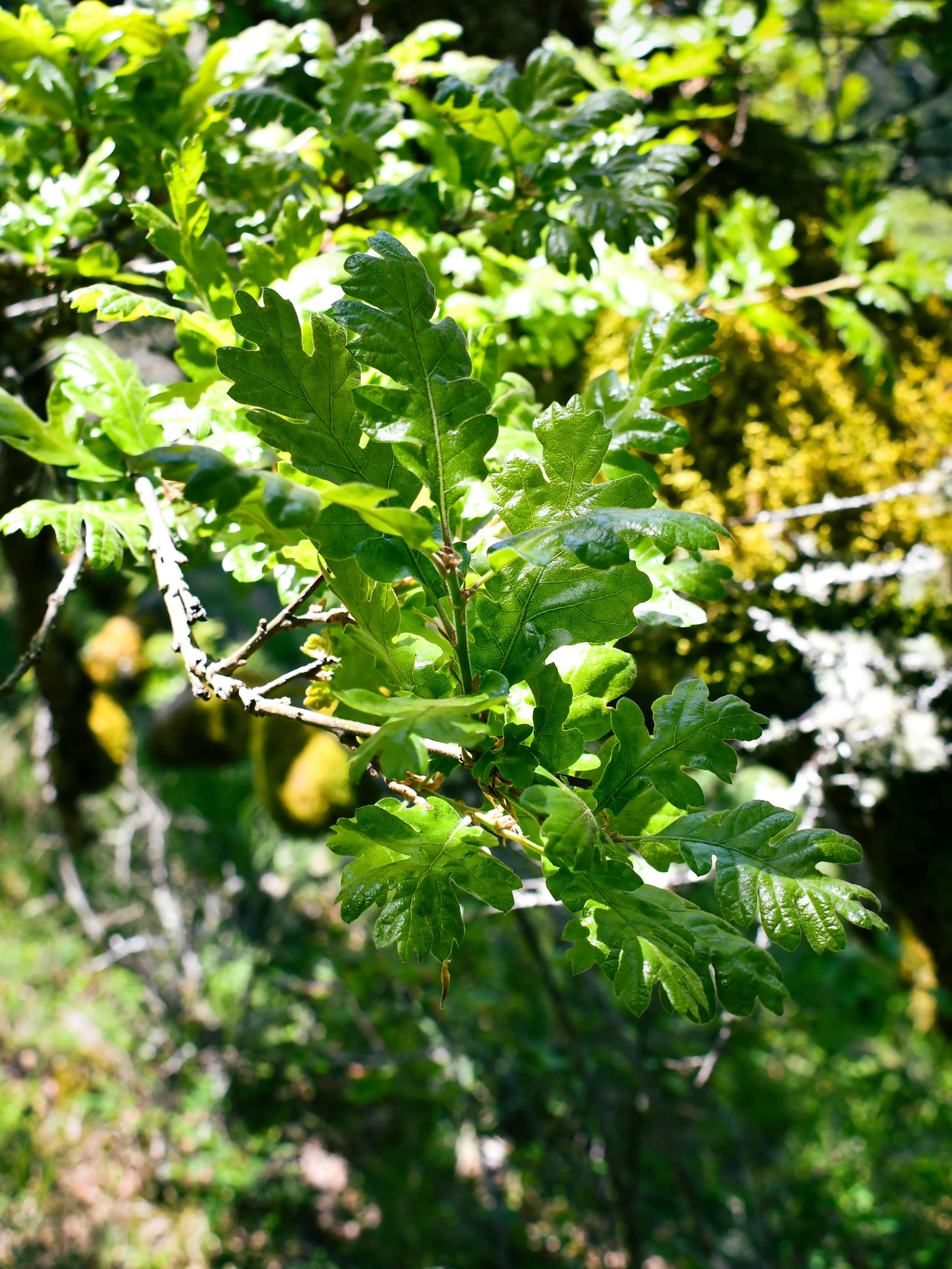Forgotten Remnants
The oak meadows that once covered the Salish Sea region are now only tiny fragments of their former glory
An ariel view of Bellingham Bay from atop one of the foothills.
Story and photos by Thor Povlsen
July 7, 2025
A little ways south of Western Washington University’s campus, down Chuckanut Drive, there is a meadow perched on the edge of a cliff. This type of meadow is known as a bald and is home to some of the rarest and most unique plant species in Washington.
Sadly, these unique ecosystems are critically imperiled due to competition from invasive species as well as the disappearance of native fire patterns, which allowed these ecosystems to thrive historically.
“I think they're really special habitats,” Abe Lloyd, a botany expert and senior instructor at Western, said. “They're rather small, and they have plants that are unique to Whatcom County and are restricted to these isolated, small pockets within what is otherwise a landscape dominated by trees.”
Millennia ago, the lowlands of the Salish Sea had extensive oak savannas — which were home to garry oak trees, hairy manzanita bushes and common camas — the same type of ecosystem that we find in the Chuckanut balds.
Due to human disruption, competition with evergreen invaders and invasive species, only fragments of prairie oak ecosystems, the larger ecosystem oak savannas belong to, are left dotted around the region. These fragile remnants, known as balds, have found their niche, clinging to steep slopes just out of reach of competitors.
A bald is a micro ecosystem, typically found on steep south or west-facing hill slopes. They form after a landslide exposes underlying bedrock, resulting in areas with little-to-no topsoil, which struggle to hold moisture. This is not ideal for larger tree species.
With these larger tree species out of the way, the canopy opens up, and smaller plants can get the sunlight they need to flourish into complex, beautiful meadows.
Native foliage in the shining sun.
Until around 12,000 years ago, much of the Salish Sea region was heavily glaciated. Glaciers scoured the landscape and drastically altered global climate zones. As glaciers retreated and the climate slowly warmed, oak savannas began to move north from Oregon and populate the barren landscape.
Species of plants and animals began to fill in the newly accessible lands and humans followed quickly after. Coast Salish peoples used fire to influence the landscape into a more diverse and abundant ecosystem.
Coast Salish peoples have known the importance of oak savanna for food and medicinal plants for thousands of years. The tribes spread in tandem with these ecosystems, helping each other thrive in the region.
Today, less than 3% of oak savanna habitats in the Puget Sound remain, and more than 100 species associated with these habitats are considered at risk or of concern.
“[Oak savannas] in general used to be far more widespread throughout the Puget lowlands than we see today,” Andy Bach, professor of environmental geography at Western, said.
Oak savannas thrived in the Pacific Northwest up until European settlers arrived. Meadows and prairie were flat and open, with ample natural resources making them perfect for early European settlements. Places where oak savannas once existed are now under cities or farms.
“[Garry oak wood] is great for buildings and great firewood,” Bach said. “I would suspect a lot of Garry oaks over time have been cut for firewood. It's better wood than any of our conifer species.”
Decades of fire suppression have left us with light-starved ecosystems brimming with wildfire fuel. To protect and potentially reestablish oak savanna ecosystems, controlled burns could be implemented to mirror Indigenous fire patterns.
Protections exist on a federal level for endangered plant species. However, the remaining balds on Chuckanut all fall on private land, leaving their fate in the hands of private property owners.
According to Joe Rocchio, the program manager of the Washington Department of Natural Resources’ Natural Heritage Program, the oak savanna balds of Chuckanut are officially recognized as critically imperiled ecosystems.
The Natural Heritage Program doesn’t have the power to stop development on private land, but it encourages partnerships and voluntary conservation whenever possible.
“We have a volunteer registry program,” Rocchio said.
The program is not binding, but it acknowledges good management by landowners who are maintaining these rare ecosystems on their properties, according to Rocchio.
In some cases, the state may approach landowners about turning their property into a designated Natural Area Preserve, but only if the habitat is truly exceptional and only with the landowner’s full cooperation.
For those looking to get involved in supporting and monitoring native habitats and species there are a wide variety of options. Individuals can volunteer with local land trusts, help with restoration and monitoring or even join rare plant survey programs like the University of Washington's Rare Care.
Another form of habitat conservation is planting oak savanna species in residential lawns, as they are technically meadows. This expansion of native habitat is instrumental in preserving local food webs for native species that once relied on oak savannas.
“We used to say, ‘protect the last of the least and the best of the rest,’” Rocchio said.
The continued survival of oak savanna balds, particularly in Whatcom County, is a stroke of luck, but also a reflection of the resilience of these unique ecosystems and the people who care enough to protect them.
But even resilience has its limits.
“The tree itself isn’t necessarily in danger, but the ecosystem type . . . it’s uncommon,” Rocchio said. “We’ve lost a lot.”
Without community awareness and active stewardship of these beautiful ecosystems, they may one day quietly disappear into the evergreen canopy.
A steep hillside, once occupied by snow is now a grassy field.



